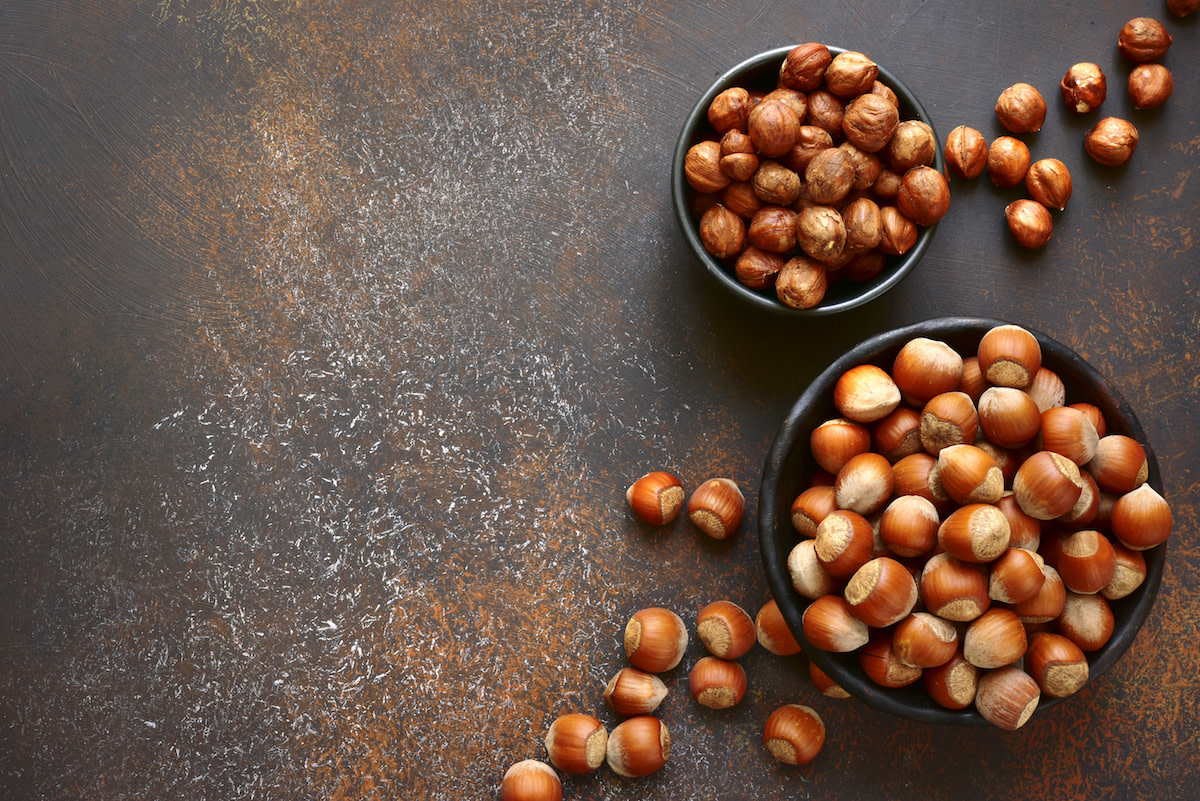Complete Guide to Hazelnuts: Culinary Uses and Health Benefits of Hazelnuts
Written by MasterClass
Last updated: Aug 13, 2021 • 3 min read
Nuts are a popular snack and ingredient around the world—not only for their taste but for the various health benefits they can provide when eaten in moderation. One nut, perhaps most well-known for being the key ingredient in a certain popular chocolate-hazelnut spread, is a large, red-brown nut called a hazelnut.
Learn From the Best
What Are Hazelnuts?
Hazelnuts (sometimes called filberts or filbert nuts) are nuts of any tree from the genus Corylus, especially Corylus avellana. Hazelnuts grow within protective husks, in clusters on hazelnut trees. When they ripen, the hazelnuts drop from the husks onto the ground, where they can be harvested. Both in-shell hazelnuts and shelled hazelnuts are available at grocery stores as ingredients for the kitchen.
The History of the Hazelnut
Archaeologists can date hazelnut consumption back almost 10,000 years ago to the ancient Mesolithic and Neolithic eras, when raw hazelnuts were a key part of the diet of hunter-gatherers. In ancient China (around 2000 BC), hazelnuts were considered a sacred food, and in ancient Greece (around 40 AD), the physician Dioscorides wrote that hazelnut paste could cure coughing, cold, and baldness.
In modern times, hazelnuts found a resurgence in popularity in 1946, when Italian Pietro Ferrero invented Nutella, a spreadable chocolate-hazelnut cream. Now, 25 percent of the global supply of hazelnuts is used by the European company Ferrero SpA to make Nutella and the hazelnut-based Ferrero Rocher chocolates.
Where Do Hazelnuts Grow?
Hazelnut trees are very hardy and can survive in climates prone to drought or cold temperatures (even without full sun), and as such they are widespread over North America (especially in Oregon), Europe, and Asia. The top three exporters of hazelnuts are Turkey, Italy, and the United States.
What Are the Different Ways to Eat or Cook with Hazelnuts?
Hazelnuts are a sweet and mild nut, and while they’re most popularly used in desserts, they are also versatile in the kitchen.
- In desserts. Hazelnuts are often chopped and used in desserts like pastries, pies, truffles, biscotti, cookies, tarts, and macaroons. Try them in this variation on Chef Dominique Ansel’s silky hazelnut chocolate mousse.
- In entrées. Try hazelnuts in savory meals, especially in traditional Italian food like pasta, ravioli, and pesto. Chopped hazelnuts are also common on top of salads and to coat fish or poultry.
- As flavoring. Hazelnut flavoring is one of the most popular flavors for coffee creamers, and it is also used to make hazelnut liqueur, which can be mixed into cocktails.
- Pressed. Hazelnuts can be pressed to produce hazelnut oil, which is used as a cooking oil in place of canola or olive oil.
- Ground. Hazelnuts can be ground up into hazelnut flour, which is used as a gluten-free alternative to wheat flour.
- Nut butter. Arguably the second-most common form of hazelnuts in the United States, hazelnut spread, hazelnut paste, and hazelnut butter are popular to use in desserts or as alternatives to peanut butter.
- Raw. While not as common, hazelnuts are a great snack food either raw or dry roasted.
What Are the Health Benefits of Hazelnuts?
Hazelnuts are filled with healthy fats and vitamins, and as such they offer a variety of health benefits. Hazelnuts are a good source of:
- Antioxidants. Hazelnuts are high in vitamin E and vitamin A.
- Monounsaturated fatty acids. These fatty acids are recommended as the healthiest fats to consume for a healthy heart, and they can also help regulate cholesterol levels and blood sugar.
- Dietary fiber. Hazelnuts are high in dietary fiber, which contributes to overall gastrointestinal health.
Become a better home cook with the MasterClass Annual Membership. Gain access to exclusive video lessons taught by culinary masters, including Massimo Bottura, Gordon Ramsay, Alice Waters, and more.
